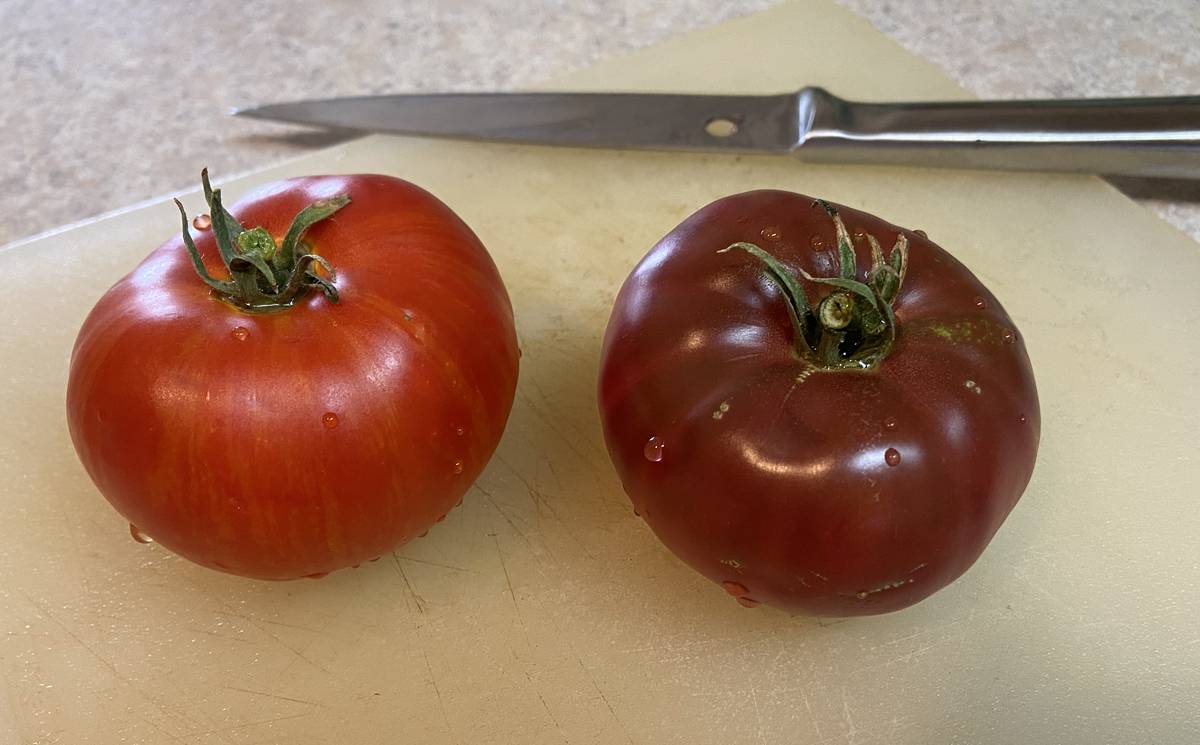
Every year around this time I see a lot of questions in my garden club about tomatoes and the issues that gardeners are facing when trying to grow them. There seem to be five main issues that desert gardeners face when it comes to growing summer’s most popular fruit. Fortunately, they are easy to treat and even easier to prevent.
1. Blossom end rot:
As the tomato grows you may start to notice a dark spot forming on the blossom end. This is called tomato end rot. The spot may also appear to be wrinkled. While the fruit above the spot is edible when ripe, it is not very appetizing.
Blossom end rot is caused by calcium deficiency. It can occur on a few tomatoes on one plant or on all of them. You can prevent blossom end rot by adding crushed egg shells to your compost. It is recommended that you cook the egg shells first before adding to your compost to prevent the spread of disease.
Blossom end rot can also be caused by inconsistent watering. If you’ve tried adjusting your watering schedule and it has not helped, consider getting a soil test. The ideal soil pH is 6.5 to 7. This will allow the tomato plant to properly absorb the calcium.
2. Hornworms:
It is no fun to walk out into your garden and find your tomato plant defoliated or large bites taken out of your tomatoes. Tomato hornworms are the likely culprit when you find this type of damage. Hornworms, even large ones, are hard to spot and can defoliate a tomato plant in less than a day.
Hornworms are not a worm at all. They are a caterpillar with a horn-like tail. Their fat green bodies are striped with pale yellow lines that form a “v”. Their clear eggs are the size of a pin head and cling to the underside of leaves.
The easiest way to find hornworms is to use a blacklight after dark. The worms have a pale glow in a blacklight. I pick the worms off and drop them into a bucket for my chickens, but a bucket of soapy water will kill them too. If you are squeamish about large bugs you may want to wear a pair of gloves.
3. Lack of fruit set:
Fifty-five to 75 degrees is the ideal temperature for pollination to take place. Once nighttime temperatures get to above 75 degrees or below 55 degrees, tomato blossoms are not as likely to set fruit. Blossoms that have formed may even drop from the plant. As you can imagine, this means you may not see many tomatoes during the months of June and August in our climate.
Providing light shade can help reduce the overall temperature in your garden, especially afternoon shade. Small salad-type tomatoes are much more productive in my garden during the summer and I find that I still get a good amount even when the heat is at its peak. Larger determinate-style tomatoes do not do as well.
4. Blight:
Blight appears as small brown spots on tomato leaves, usually starting at the bottom. The leaf gradually turns brown and falls from the plant. If left untreated it can quickly spread through the entire plant and all leaves will be lost.
Blight is caused by a fungus and can affect other plants in the tomato family such as potatoes, peppers, and eggplant. Blight can remain in the soil after the plant is gone so the easiest way to prevent blight is to practice crop rotation. Do not plant tomatoes where you have planted anything in the tomato family in the last three years.
Damp conditions and overcrowding can create ideal conditions for blight to spread so you should plant tomatoes at least 1 foot apart if trellising and pruning, and 3 feet apart if caging or staking. Avoid watering the leaves of the plant and water the soil instead to keep the area from becoming too damp.
At the first sign of blight cut off the affected leaves and dispose of them. Do not put the leaves in your compost. There are fungicide garden products that you can use as well but I do not recommend them. To me, prevention is better than treating the problem after.
5. Cracking:
Sometimes cracks will start to appear on tomatoes, usually originating from the stem downward. Some types of tomatoes, mostly heirloom varieties, are more prone to this than others. If the cracks form when the fruit is young, they may scar over as it continues to grow. Often though, insects will take advantage of the defect and burrow into the fruit.
The most common reason for the cracking is inconsistent watering. If the plant goes for too long without water when the water comes the plant will uptake the water rapidly, causing the cracks in the fruit. To avoid this issue, try to water your garden consistently on a schedule.
I utilize driplines in my garden. The driplines are attached to a timer and go off three times a day for a period of ten minutes at this time of year. This consistent watering greatly reduces cracking and other similar defects.
If you run into problems growing tomatoes, don’t give up. Keep trying until you find what works for you. With due diligence and a keen eye, you can have a successful tomato harvest all season.
Terri Meehan is the Founder of Southern Nevada Gardening Association a regional group. She is a garden mentor and local farmer in Pahrump. Send questions or comments to her at sonvgarden@gmail.com